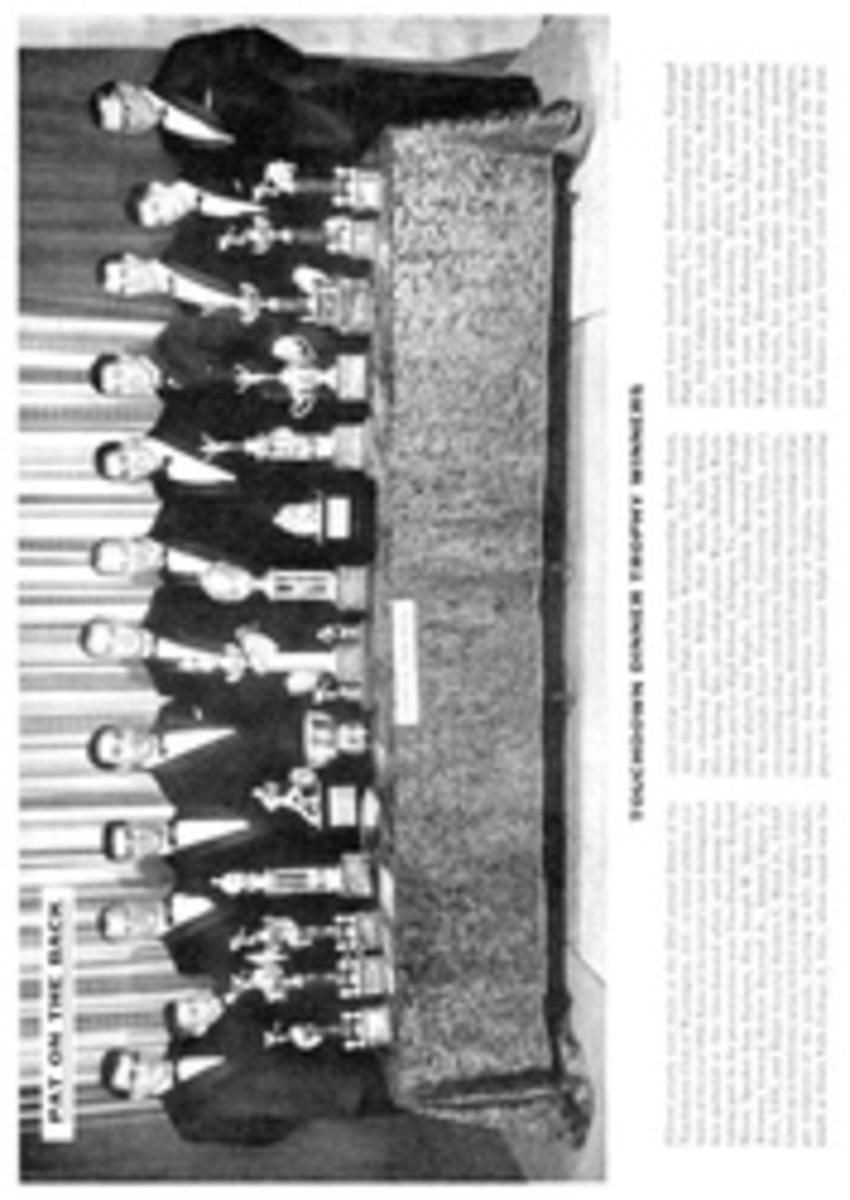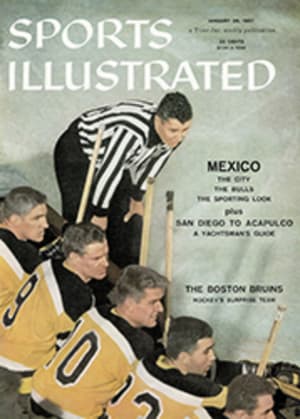
YOU SHOULD KNOW
The most distinctive sporting event in Mexico is the bullfight, and the Plaza Mexico in Mexico City—seating 50,000 persons—is the largest bull ring in the world. Each Sunday at precisely 4 p.m., from early November until late March, corridor—bullfights in which professional matadors participate—are held there. (In the off-season novilleros, young men who hope to become matadors, appear at the Plaza Mexico, also on Sunday.) Occasionally fights are held in the 32,000-seat Plaza El Toreo, just outside the federal district, but there is no fixed schedule.
How to get tickets
The Sunday program is announced in newspaper advertisements on the preceding Thursday. Disregard the hotel clerk or guide who assures you that "the fight is a complete sellout but because of my good connections I was able to get hold of these seats"—and then offers them at 10 times the box office price. The fight is seldom sold out before Sunday. Go to the box office at Izazaga 23 (just 10 blocks south of the original Sanborns, down the Avenida San Juan de Letràn). At the window labeled Sombra Numerados (numbered seats in the shade) ask for a program (ticket sellers speak English), study the seating map and indicate the location you want. Pay the exact list price of the ticket. (Be sure to keep the program. There are no announcements, in Spanish or English, at a corrida—only bugle calls to signal the various stages.) If you delay until Sunday and find the fight really is sold out, you can take a chance with a scalper outside the Plaza. Choose one who is standing near a policeman. Pay just 20% above list price; if the scalper objects, walk toward the policeman. The argument will end abruptly.
What seats to buy
The bull ring is divided into two main sections, sol y sombra, sun and shade. Don't buy seats in the sun; these are akin to bleacher seats in Brooklyn, and you are likely to be doused with beer or sprinkled with red, black and blue powder tossed by the uninhibited local aficionados. The first seven rows of shady barrera (ringside) seats cost around $5 to $6 but usually are sold out for the season. The next nine rows, known as first tendido, are the best bet and can be had at box office for around $3. The second tendido (next 23 rows) is priced at about $2 but still gives an excellent view because of the Plaza's steep pitch.
The day of the fight
Plan to arrive at the Plaza by 3:30; as everyone knows, the bullfight starts on time. The Plaza is located about 20 minutes south of the downtown area, just off the Avenida de Los Insurgentes. If you have your own car, there is ample parking space. Cab fare will be 6 to 9 pesos. Your ticket has a tunnel number for direct access to your seat. En route, buy a cushion (50 centavos, or about a nickel); if an usher directs you, tip him 2 pesos (15¢).
Once seated, you will become aware that the spectacle already is before your eyes: The great bowl is filling; hundreds of smartly dressed se√±oritas are in evidence; high above you the band is playing one snappy paso doble (two-step) after another. The crowd is gay, but if this is your first bullfight you may feel apprehensive. Remind yourself that to the Spanish world a bullfight is not a fight between a man and a bull in which one emerges the winner but rather a test of man's courage and grace against the raw bravery of a wild beast. Face the fact that you are going to see a good deal of blood. The picador's lance does not cause the bull great pain, but it makes him bleed heavily. Do not be surprised if—when the time comes for the kill—the bull does not die instantly. Forget what you have heard about the agony of the horses; these days they are almost never gored, thanks to elaborate suits of padding (right). Finally, don't be cowed (or bulled) by the technical details which clutter up most of the pocket guides to the corrida. To be able to identify all the passes (or to locate the "terrain of the bull") one must see 100 bullfights; there will be time enough for the fine points when—and if—the corrida has touched off an emotional spark and made you want to come again.
The prelude and the cast
On the dot of 4 a bugle sounds. As the band plays Cielo Andaluz, the traditional two-step that opens most bullfights in Mexico, a municipal official dressed in 16th century costume brings a parade of participants across the ring from the "gate of honor" to the judges' box. The three matadors, each of whom will be expected to kill two bulls, follow the horseman. As they approach, the senior matador will be on your right, the next in seniority on your left, and the youngest in the middle. All are dressed in the silk and gold traje de luces, or "suit of lights." Each is followed by his cuadrilla, a group of helpers which includes the banderilleros and the picadors, the latter on padded, blindfolded horses. Trailing the procession are the monosabios (wise monkeys), who assist the picadors and keep the ring cleaned up.
The fight itself
As the parade breaks up, the picadors withdraw and the matadors and their cuadrillas enter the alley between the barrera seats and the shoulder-high wall that encloses the ring. From your sombra seat you will see the first matador take his place below you in the burladero de matadores, a shielded slot in the ring wall big enough for a man to squeeze through but too small for a bull. Across the ring, to the left of the gate of honor, is the puerta de los sustos, the "gate of fright," from which the bull will emerge. To the left and right of the burladero de matadores are other burladeros, in which the helpers wait, holding large rose and yellow fighting capes.
A second bugle call sounds, the gate swings wide, and into the arena comes the bull. Remember, this is no ordinary bull but an animal raised wild on a great ranch, at least 4 years old and weighing 900 pounds or more, bred of fighting stock, armed with the instinct to kill anything in his path. The helpers are the first to challenge him. They lure him back and forth across the ring with their capes. The matador, still secure in his burladero, watches intently, studying the bull to see if he hooks to the right or to the left, high or low.
After a few minutes the helpers retire, and the matador steps out. As the bull charges, the matador guides the animal past him with the cape. This is the verónica, the basic cape pass. The matador may make as many verónicas as he likes.
Next the signal is given for the picadors to come out. The picadors' mission is to tire the bull by inviting a number of charges against the horses' padded sides and to bleed (and thus weaken) him by placing their lances in his great tossing muscle. Sometimes they overdo it—but without the pics the matador would be unable, later on, to perform the beautiful passes that dignify the corrida. Into the ring with the picadors come the other two matadors, each with his cape. Each in turn will come to the aid of the horse (right, below), caping the bull away and performing a variety of passes.
Again the bugle—this time for banderillas, the two-foot-long ornamental darts which are placed in the bull's shoulders and serve to renew his fighting fury. Once three pairs of the darts have been placed the bugle calls for the third and climactic part of the corrida.
The matador, carrying his sword and the small, red muleta in his left hand, begins his faena, which is the elaborate ritual of passes designed to show he has won domination over the animal. The matador may use several kinds of passes (SI, Jan. 17, 1955), linking them together so that the bull moves back and forth as though mesmerized, each charge bringing the dangerous horns within inches—or less—of the matador's exposed body. In the faena the matador must keep his feet "nailed down" as the bull charges if he hopes to hear the chant of olé! from the fans.
If the bull is brave and the matador both brave and graceful, you may very well discover in the faena the magic that for centuries has captured the Latin imagination.
At the conclusion of the faena comes the moment of truth—the moment when the matador concludes that he has truly dominated the animal and can now make the kill. Holding the sword in his right hand, he profiles himself to the bull, aims carefully and sweeps the muleta downward with his left hand, at the same time running in over the horns to make the thrust. Should the bull fail to follow the muleta and instead hook toward the matador, the matador may die (many have). But if the kill is clean and the faena was an artistic triumph, the matador may win both ears and the tail.
A cautionary note
Ideally, the fight here described will be repeated five more times in the course of the afternoon's corrida. All bulls, however, are not brave, and neither are all bullfighters. The aficionado feels rewarded if there is one good—let alone truly great—fight on a single program.
FOUR PHOTOS
HOW HORSES ARE PROTECTED
Bulletproof quilt weighing 120 pounds is strapped on the horse, saves him from otherwise bloody goring by charging bull.
Boy ties knot in tail (above) before blindfolded horse is led to arena by picadors (below), whose legs are encased in steel armor.
In fight, horse may be toppled and badly bruised but is rarely gored. Man on fence at right is monosabio, or "wise monkey."

